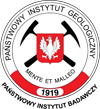Witryna Surowce mineralne Polski zawiera najważniejsze informacje o zasobach złóż kopalin w Polsce, stanie ich zagospodarowania oraz wielkości wydobycia. Informację źródłową dla niej stanowią dane pochodzące z systemu Gospodarki i Ochrony Bogactw Mineralnych Polski MIDAS oraz z "Bilansu zasobów złóż kopalin w Polsce" według stanu na dzień 31 XII 2023 r.
Kompletne zestawienie 14 918 złóż kopalin jest przedstawione w postaci tabel uzupełnionych informacjami opisowymi. Kopaliny podzielone są na grupy, na podstawie ich przydatności surowcowej. Wewnątrz grup dane prezentowane są w układzie administracyjnym lub – jak w przypadku złóż węgla kamiennego oraz złóż ropy naftowej i gazu ziemnego – w podziale regionalnym. Uzupełnieniem informacji zawartych w opracowaniu tabelaryczno-tekstowym jest komplet map prezentujących rozmieszczenie złóż kopalin objętych własnością górniczą oraz innych ważniejszych grup kopalin.
Dane przestrzenne prezentowane w serwisie MIDAS odnoszące się do: złóż kopalin, obszarów i terenów górniczych są udostępniane w formacie SHP – Pobierz dane
Redaktorzy strony: Anna Kalinowska, Agnieszka Malon, Marcin Tymiński













